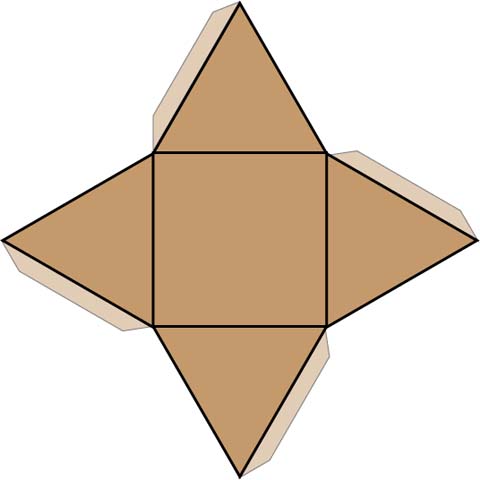Google Earth Voyager Story: The Mathematics of Pyramids, Part 1
Early in your education, you learned about pyramids. Mathematically, you learned that they are simple three-dimensional figures. You also learned about how the Egyptians built massive pyramids as tombs for their rulers. You may even have seen videos about how the Egyptians pyramids were built, and the incredible effort it took to make that happen. To see the Google Earth version of this lesson go to this link (best viewed in Chrome).
In this lesson you'll be studying the geometric properties of pyramids.
1. Introduction: 3D Geometry
Pyramids are part of a large group of three-dimensional figures.This video will introduce you to the Platonic solids.
2. Building Cubes and Pyramids
A cube is a Platonic solid. It has six square faces and all sides and angle measures are congruent. As a Platonic solid, it is called a hexahedron, which literally means "six sided." The video gives you different views of a cube.
 |
A pyramid is not a Platonic solid. A square pyramid has the same base as a cube and can also be the same height. It has four triangular faces and a square base. The video gives you different views of a pyramid.
 |
To construct a cube use a net like the one shown here. Print and cutout the net, or construct one of your own. (Click here for a printable version of the net.) The video shows how the net folds into a cube. Note: The net shown below includes flaps in case you want to use glue in constructing the cube.

This is the net for a square pyramid. Cut out and construct a pyramid and compare it to the cube you constructed.


3. Exploring the Volume of a Pyramid
For this activity, you can watch the video or you can following along building the pyramids that are shown. If you do that, you'll need the following materials.
- Cubes for constructing the pyramids. Make sure the cubes are all the same size, color, and don't have any labels on them.
- Grid paper and pencil.
- A sheet for recording data, or you can use a spreadsheet.
